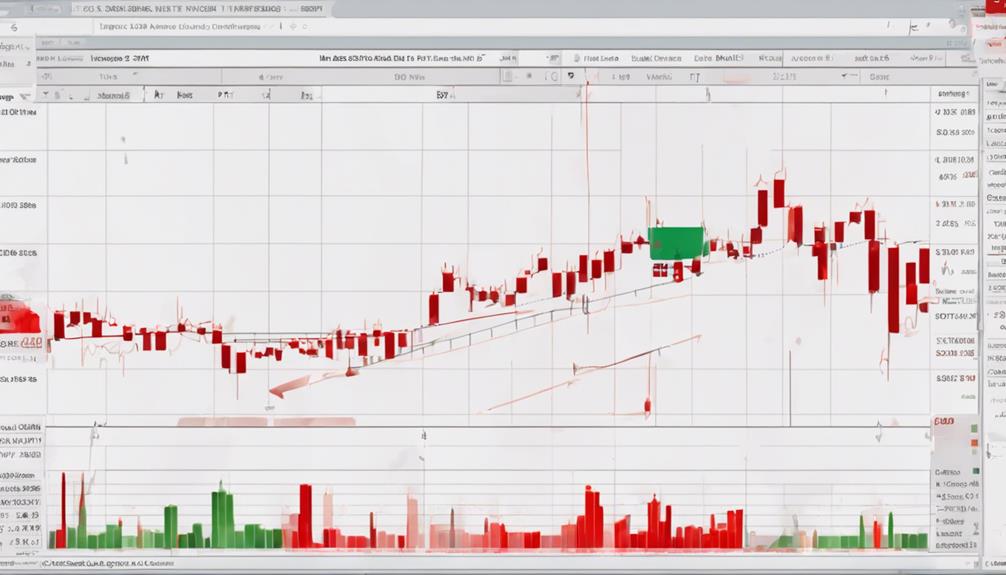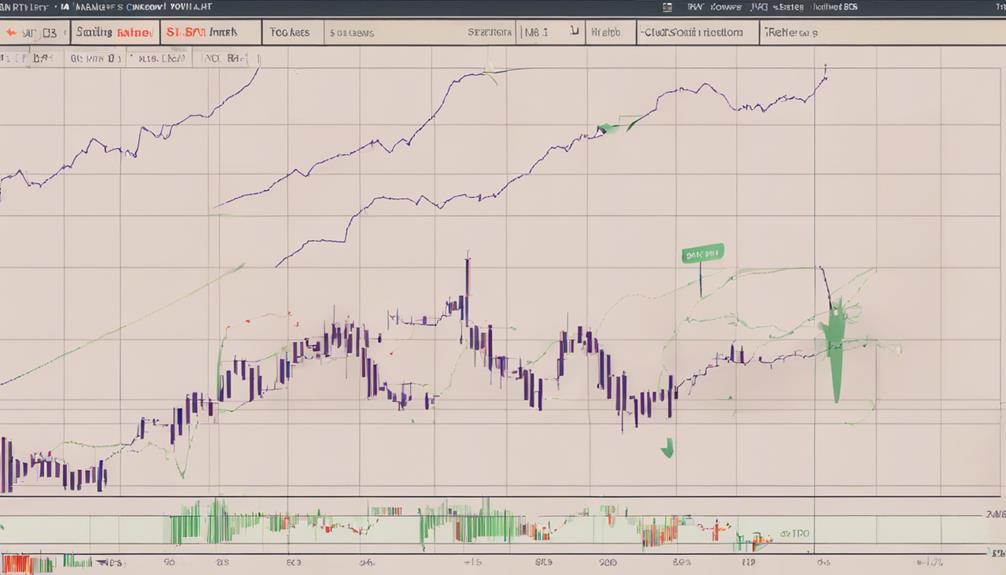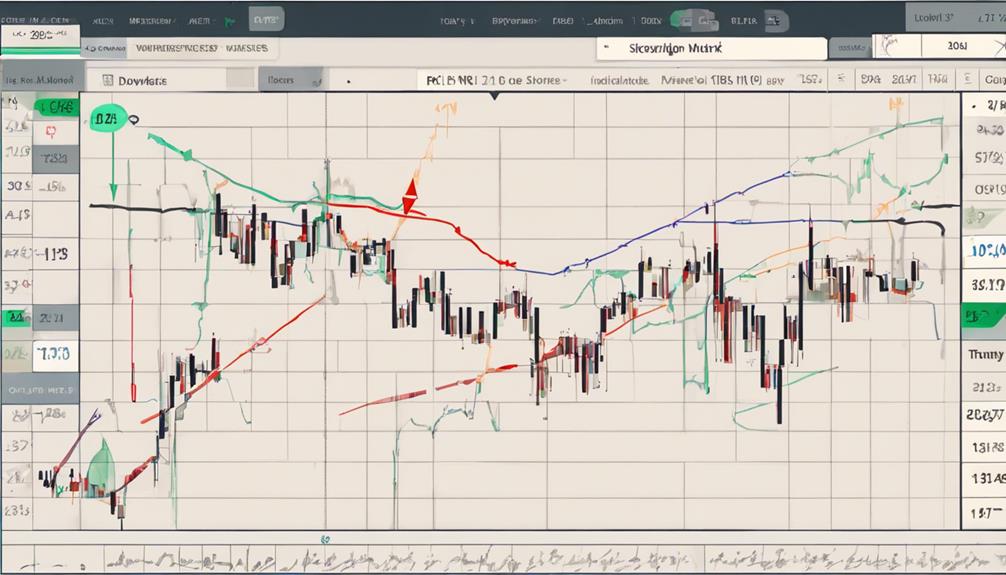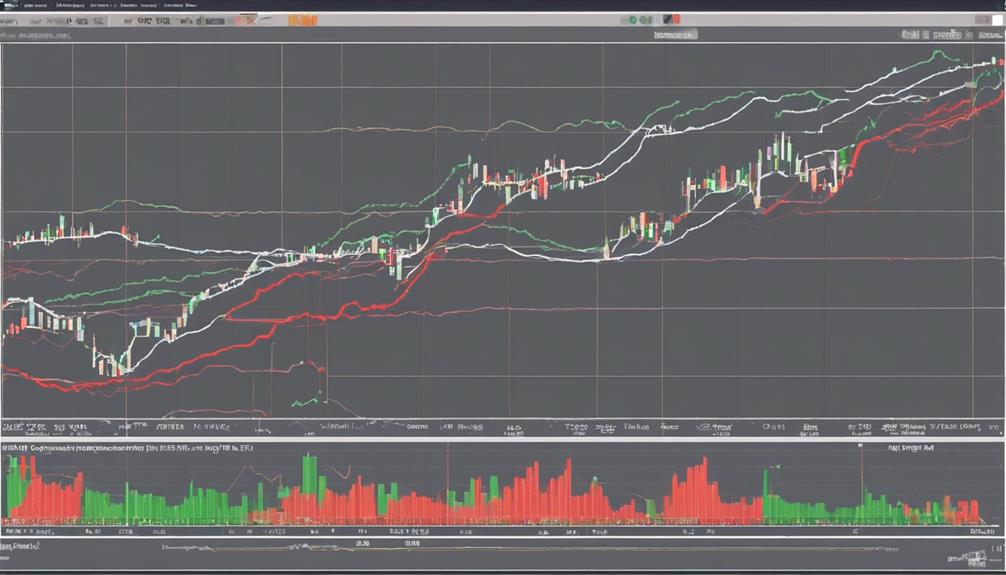In the stormy seas of a bearish market, navigating with the compass of the Relative Strength Index (RSI) can be your guiding light. Understanding how RSI behaves during downtrends can be the key to unlocking valuable insights into market dynamics and potential opportunities.
By grasping the nuances of RSI in bearish conditions, you can position yourself strategically in the market turmoil and potentially turn the tides in your favor.
RSI Basics and Calculation
When calculating RSI, you evaluate the average gains and losses over a specified period to determine Relative Strength (RS). This technical indicator, known as the Relative Strength Index (RSI), helps traders assess the price momentum and potential trading opportunities. By analyzing the average gains and losses, RSI provides signals for overbought and oversold conditions in the market.
When the RSI readings go above 70, it indicates overbought conditions, suggesting a possible price reversal or correction. Conversely, RSI readings below 30 signal oversold conditions, hinting at potential buying opportunities. Understanding how RSI works can assist traders in making informed decisions by interpreting signals derived from the average price movements over a specific timeframe.
Interpreting RSI in Bearish Markets

During bearish market conditions, interpreting the Relative Strength Index (RSI) provides crucial insights into ongoing price dynamics and potential trading strategies. Here are some key points to consider when interpreting RSI in bearish markets:
- RSI values typically remain below 50, indicating downward momentum.
- RSI levels between 50-60 act as resistance, signaling potential selling pressure.
- Bearish RSI divergences occur when price makes new lows without RSI confirmation, suggesting weakening bearish momentum.
- RSI below 30 may signal oversold conditions, hinting at a potential reversal or bounce.
Using RSI for Bearish Trend Identification

To identify bearish trends effectively using the Relative Strength Index (RSI), pay close attention to RSI levels below 50 indicating potential weakening momentum and bearish conditions.
During a bearish trend, RSI staying between 10-60 confirms downside momentum. Keep an eye on resistance levels around 50-60 on the RSI chart, as they can signal bearish pressure and potential trend continuation.
Bearish trend confirmation happens when RSI fails to reach overbought levels above 70. Additionally, lower highs on the RSI followed by downward moves suggest bearish sentiment and potential trend reversal.
Strategies for RSI in Downtrends

Amidst downtrends, implementing strategic approaches with the Relative Strength Index (RSI) can enhance your ability to navigate market conditions effectively and make informed trading decisions. Here are some key strategies for utilizing RSI in downtrends:
- Monitor RSI levels: RSI typically stays between 10 and 60 during downtrends, indicating bearish momentum.
- Identify resistance levels: The 50-60 zone on RSI acts as resistance in a downtrend, signaling potential selling pressure.
- Watch for reversal signals: Lower highs on RSI followed by downside moves can indicate a Top Swing Failure and potential trend reversal.
- Avoid overbought conditions: RSI surpassing 70 in a downtrend can signal overbought conditions and a possible reversal. Adjusting RSI levels beyond the standard 70 and 30 can help in navigating extended downtrends effectively.
How Can RSI Help in Bearish Market Conditions for Effective Swing Trading?
During bearish market conditions, effective swing trading with RSI can be a valuable tool. RSI, or Relative Strength Index, helps traders identify oversold conditions, potentially signaling a reversal. By using RSI in swing trading strategies, traders can capitalize on short-term price movements and make well-informed decisions in volatile markets.
RSI Divergences in Bear Markets

In bear markets, recognizing RSI divergences becomes crucial for anticipating potential shifts in price direction and validating trend changes.
RSI divergences in bear markets occur when the price forms lower lows while RSI forms higher lows, signaling weakening bearish momentum and a possible trend reversal.
Identifying these divergences can help traders confirm potential trend changes and improve timing for entry and exit points.
By using RSI divergences effectively, traders can enhance their strategies during bearish conditions, ensuring they're well-prepared to navigate the market's uncertainties.
Frequently Asked Questions
What if RSI Is Bearish?
If RSI is bearish, you should consider market oversold conditions. Look for signs like divergence or failure swings for potential reversals. Low RSI levels in a bearish market can reveal buying opportunities when combined with other indicators.
Should You Buy When RSI Is High or Low?
When RSI is high (above 70), you should consider selling due to overbought conditions. Conversely, buying may be beneficial when RSI is low (below 30) as it signals potential buying opportunities. Always analyze other indicators too.
What Does It Mean When Price Goes Down but RSI Goes Up?
When price drops while RSI rises, it signals a potential bullish divergence. This divergence, with lower lows in price and higher lows in RSI, hints at weakening bearish momentum and a potential trend reversal. Consider this for trading opportunities.
How Do You Use RSI to Identify a Trend?
How can you use RSI to identify a trend? Look for RSI resistance levels around 50-60 for downtrend signals. Lower highs followed by downside moves indicate trend reversal potential. RSI acts as a confirmation tool in identifying downtrends.
Conclusion
In conclusion, mastering the Relative Strength Index (RSI) during bearish market conditions is essential for successful trading. By understanding RSI basics, interpreting signals accurately, and utilizing strategies tailored for downtrends, investors can navigate challenging market environments with confidence.
For example, during a recent bearish trend, a savvy trader used RSI divergences to identify a potential reversal point, resulting in a profitable trade.
Stay informed, stay alert, and let RSI be your guide in bearish markets.
